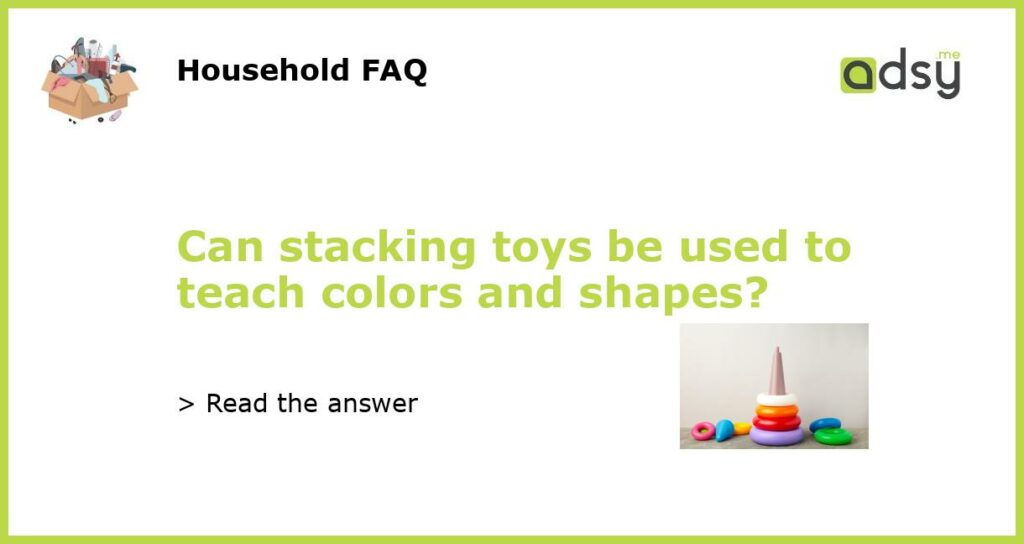Yes, stacking toys can be used to teach colors and shapes
Stacking toys are not just for playtime, they can also be a valuable tool for teaching young children about colors and shapes. These toys are designed to be stackable, allowing children to build towers, structures, or patterns by arranging and stacking the different shapes. This simple activity can help children develop their hand-eye coordination, fine motor skills, problem-solving abilities, and cognitive skills, including color and shape recognition.
Benefits of using stacking toys for color recognition
One of the main benefits of using stacking toys for teaching colors is that they provide a hands-on and interactive experience. Children can actively engage with the toys, explore different color combinations, and create their own patterns. This tactile and visual experience helps them develop a deeper understanding of different colors and how they can be combined.
Furthermore, stacking toys often come in different colors or have colorful patterns on them. By manipulating these toys, children are exposed to a variety of colors, which helps them develop their color recognition skills. They can learn to differentiate between colors, name them, and even match them to objects in their environment.
Using stacking toys to teach shape recognition
In addition to color recognition, stacking toys can also be used to teach children about different shapes. These toys often come in various shapes, such as circles, squares, triangles, and rectangles. By manipulating and stacking the different shapes, children can learn to identify and distinguish between them.
Through repeated play, children can develop their ability to recognize shapes, name them, and understand their characteristics. For example, they can learn that a square has four equal sides and angles, while a circle is round and has no corners.
How to incorporate stacking toys into color and shape activities
There are various ways to incorporate stacking toys into color and shape activities. Here are a few ideas:
– Sorting and grouping: Encourage children to sort the stacking toys by color or shape. They can group the toys into piles, baskets, or trays based on similarities. This activity helps them practice their categorization skills and reinforces their understanding of colors and shapes.
– Pattern creation: Provide children with a set of stacking toys in different colors and challenge them to create patterns. For example, they can stack the toys in a red-blue-red-blue pattern or create a sequence of shapes, such as circle-square-triangle-circle-square-triangle. This activity helps children develop their problem-solving abilities and reinforces their understanding of color and shape sequences.
– Color and shape naming: While playing with stacking toys, encourage children to name the colors and shapes they are using. This helps reinforce their vocabulary and language skills, while also deepening their understanding of colors and shapes.
Tips for choosing stacking toys for color and shape learning
When choosing stacking toys for teaching colors and shapes, consider the following tips:
– Variety: Look for stacking toys that come in a variety of colors and shapes. This will provide children with more opportunities to explore different colors and shapes.
– Safety: Ensure that the stacking toys are made of safe materials and do not have any small parts that could pose a choking hazard.
– Durability: Choose stacking toys that are durable and can withstand repeated play, as children will often stack and knock them over.
Conclusion
Stacking toys can be a fun and effective tool for teaching young children about colors and shapes. By providing hands-on and interactive learning experiences, these toys help children develop their color and shape recognition skills, as well as other cognitive and motor skills. Incorporating stacking toys into color and shape activities can make learning more engaging and enjoyable for young children.






